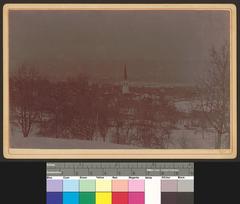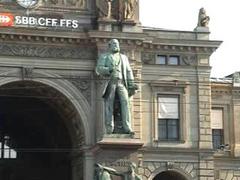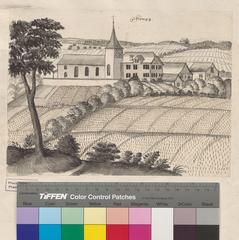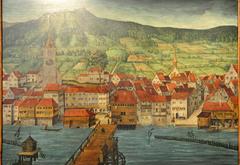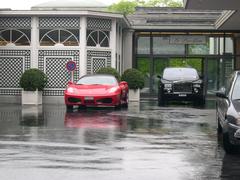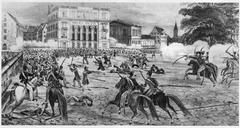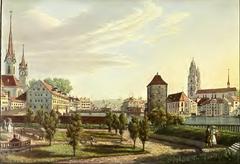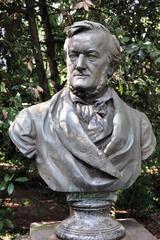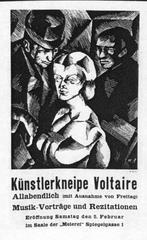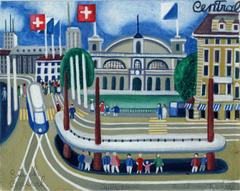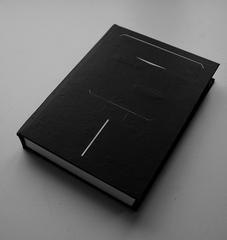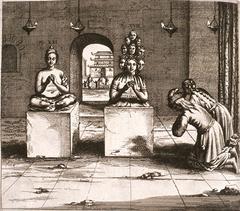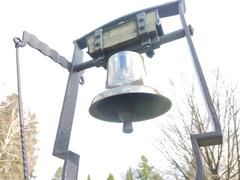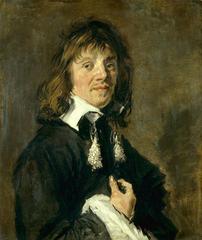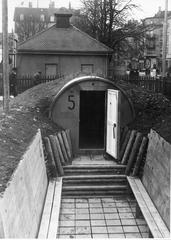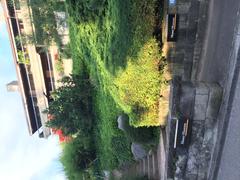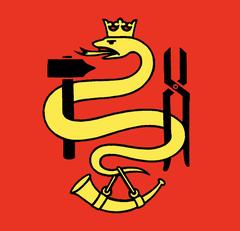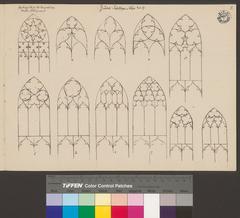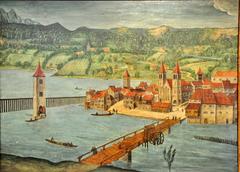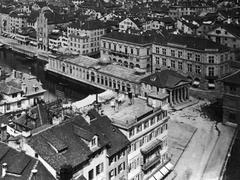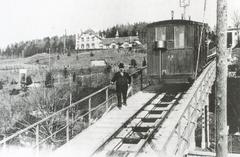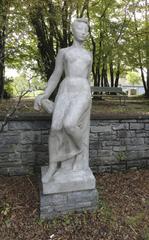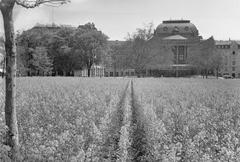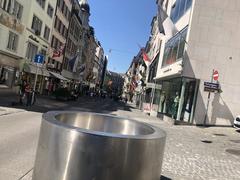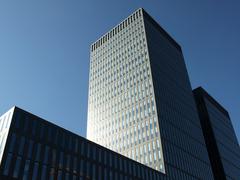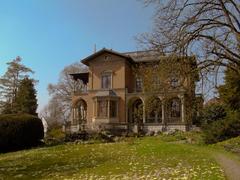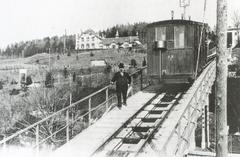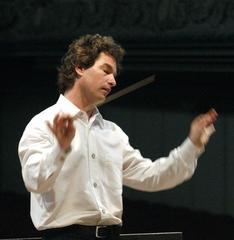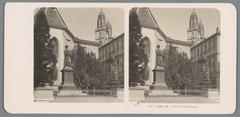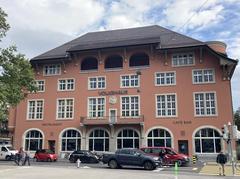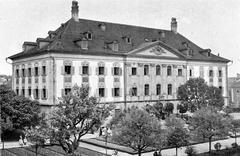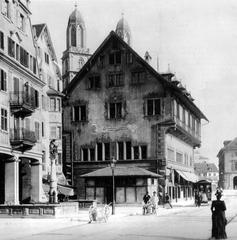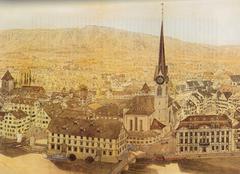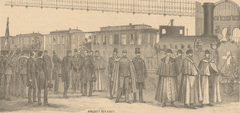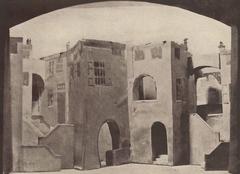Visiting Fraumünster in Zürich: History, Tips, and Visitor Information
Date: 18/07/2024
Introduction
Table of Contents
- Introduction
- The Birth of a Legacy - Founding and Early Years
- Power and Patronage - The Medieval Period
- Reformation and Transformation - A New Era Dawns
- Architectural Evolution - From Romanesque Roots to Gothic Grandeur
- Visitor Information - Plan Your Visit
- FAQs
- Conclusion
The Birth of a Legacy - Founding and Early Years
Fraumünster, founded in 853 AD by Louis the German, enjoys a history as captivating as its architecture. Established as a Benedictine abbey for aristocratic women, with Louis’s daughter Hildegard as the first abbess, the church held significant political weight. The abbey was granted immunity from taxes and the right to mint coins, establishing the abbess as a powerful ruler. Imagine the bustling marketplace, the clink of coins, all under the watchful gaze of the Fraumünster!
Power and Patronage - The Medieval Period
The ensuing centuries saw Fraumünster wield considerable influence. The abbesses, often from noble families, held sway over the surrounding lands and played a crucial role in Zürich’s political landscape. This era also witnessed the abbey’s physical expansion, with the Romanesque style, popular at the time, finding expression in the church’s architecture. However, the echoes of this period are faint, with only the crypt and the southern transept surviving the tides of time.
Reformation and Transformation - A New Era Dawns
The 16th century ushered in the Swiss Reformation, a period of immense religious and social upheaval. In Zürich, this change was spearheaded by Huldrych Zwingli. The abbey, a symbol of the old order, was dissolved in 1524, its lands absorbed by the city. The nuns were pensioned off, and Fraumünster transitioned from a place of cloistered contemplation to a Protestant church. This shift marked a turning point in its history, stripping it of its political clout but solidifying its religious significance for the burgeoning Protestant community.
Architectural Evolution - From Romanesque Roots to Gothic Grandeur
Fraumünster’s architectural narrative is one of evolution and adaptation. While the Romanesque style characterized its early centuries, the church we see today bears the hallmarks of later periods. The most striking feature, the soaring Gothic nave, dates back to the 13th and 14th centuries. This period saw a surge in Gothic architecture across Europe, characterized by pointed arches, ribbed vaults, and an emphasis on height and light. Fraumünster embraced this style, its nave standing as a testament to the architectural prowess of the time.
A Symphony in Stone and Glass - Architectural Highlights
- The Romanesque Crypt - Descend into the cool stillness of the crypt, the oldest part of the church. Here, the weight of history is palpable. The sturdy pillars and vaulted ceilings whisper tales of the abbey’s early days.
- The Gothic Nave - Step into the nave, and your gaze is inevitably drawn upwards. The soaring ceilings, supported by slender pillars, create a sense of awe-inspiring grandeur. The play of light through the stained-glass windows bathes the space in a kaleidoscope of colors, adding to the ethereal ambiance.
- Chagall’s Masterpiece - No exploration of Fraumünster is complete without experiencing Marc Chagall’s breathtaking stained-glass windows. Installed in the 1970s, these five windows, each depicting a biblical story, are a vibrant fusion of color and light. The south transept window, showcasing the entirety of Christ’s life, is particularly noteworthy.
- The Church Tower - While not the original, the current tower, dating back to the 18th century, is an integral part of Fraumünster’s silhouette against the Zürich skyline. It’s a reminder of the church’s enduring presence across centuries.
Visitor Information - Plan Your Visit
Visiting Hours
Fraumünster is open to visitors from Monday to Saturday, 10 AM to 5 PM, and Sundays from 12 PM to 5 PM. It’s advisable to check the official website for any changes in the schedule.
Tickets
A small entry fee is charged, which includes access to the church and a leaflet guide. Guided tours are also available for a more in-depth experience.
Accessibility
The church is wheelchair accessible, and assistance is available upon request.
Nearby Attractions
While in Zürich, consider visiting other historical sites such as Grossmünster, St. Peter’s Church, and the Swiss National Museum. The nearby Limmat River offers picturesque views and a serene atmosphere for a leisurely stroll.
FAQs
Q: Can I take photos inside Fraumünster?
A: Photography is generally allowed, but it’s best to check with the church authorities for any restrictions during your visit.
Q: Are there any special events held at Fraumünster?
A: Yes, Fraumünster hosts various cultural and religious events throughout the year. Check their official website for the event calendar.
Conclusion
Fraumünster stands today as a captivating blend of history, art, and architecture. It’s a testament to the enduring power of faith, the ebb and flow of power, and the artistic brilliance of different eras. As you wander through its hallowed halls, let the stories etched in its stones and stained-glass windows transport you through time, offering a glimpse into the rich tapestry of Zürich’s past.
